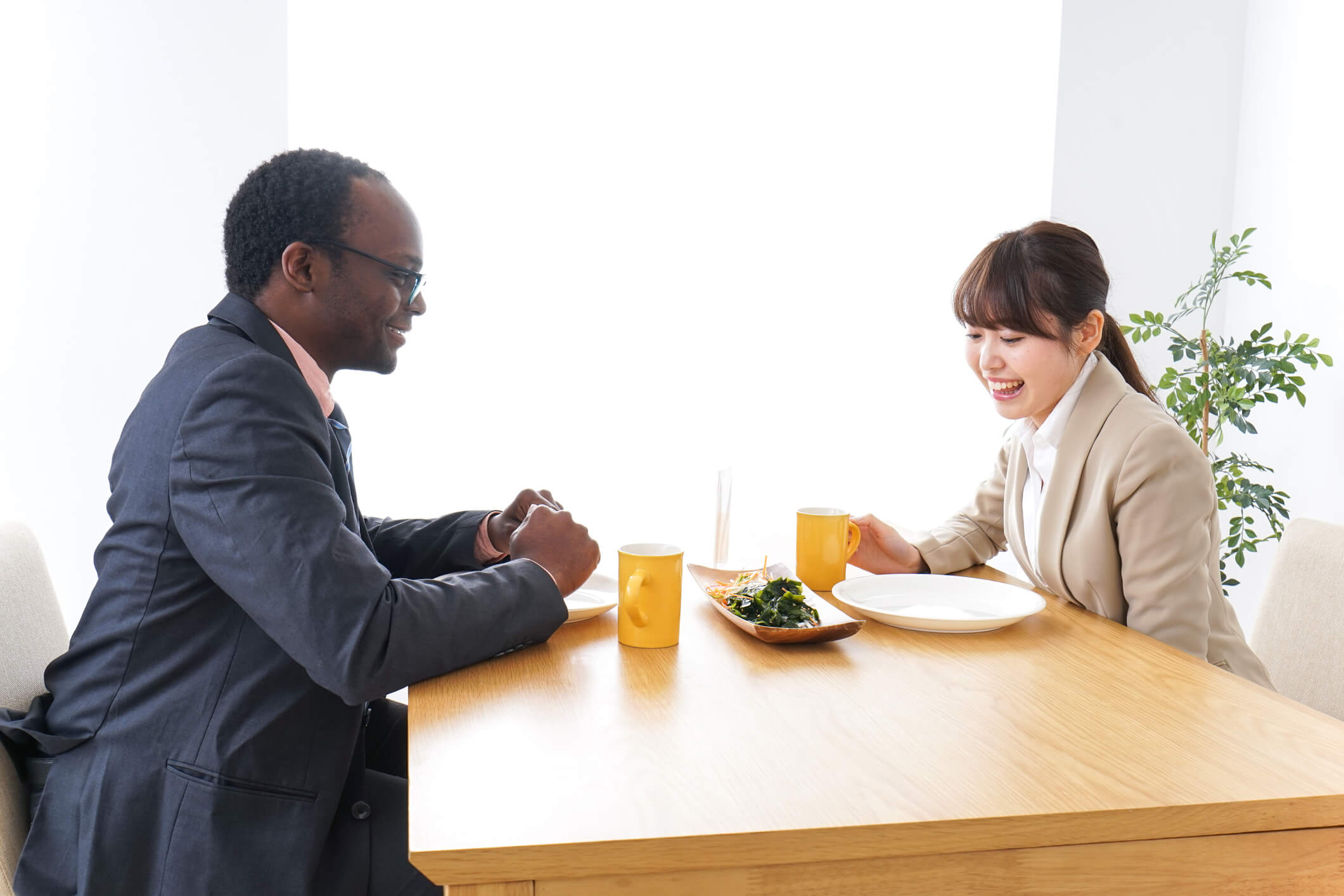
Last Updated: 15 Jul 2020 Working with Japan – Let’s have lunch
A newly acquired company
I have recently been doing some work with a Japanese company that has acquired an American company in my Midwest town. The company has been well-run and profitable for nearly 100 years. The Americans have significant experience in their industry. The Japanese company has expanded into China and Southeast Asia in the last decade, but this is their first big deal in the U.S. The Japanese have become used to working with non-Japanese, but not with Americans. Most of the Americans at the company have worked there many years, and never dreamed that the family that owned the company would sell to an outside party, let alone a foreign company.
The new Japanese manager is always in his office
At this company, my job involves interpreting at the weekly status report meeting between the upper U.S. management and the new Japanese general manager, Hayashi-san. This meeting usually takes place on Wednesdays at 10:00am. At the end of the meeting, I am asked to provide feedback and suggestions for improving the communication in future meetings. I am there only a few hours each week. But over time I have been able to see the relationship between Hayashi-san and the U.S. managers grow and thrive, in spite of a number of rough patches. Lunch at Appleby’s has played a role in this.
This is how it happened. At one of the first meetings, the U.S. senior manager, whom I’ll call Joe, took me aside after the meeting, and asked, “How are we doing with Hayashi-san? He seems so quiet and almost secretive. When he’s not in our meeting, he’s always in his office. How do I break the ice? Should I invite him for a drink?”
Leaving the office alone at 12:00pm
Just then I happened to glance out the door and catch sight of Hayashi-san heading out by himself. He looked so tired and lonely. I had heard that the company’s original plan was to assign two Japanese managers to the company. Unfortunately that was right at the time of the “Lehman Shock,” the financial melt-down of September 2008, which caused many Japanese companies abroad to recall overseas assignees. Hayashi-san was not only forced to handle the entire operation, but was also eating lunch alone.
“Why don’t you try asking Hayashi-san out to lunch tomorrow? I think that he goes to lunch at 12:00am,” I suggested. “Really,” asked Joe, “do you think that would be ok?” I don’t know why I hadn’t suggested it earlier. Those lunches formed the basis of a solid relationship between Joe and Hayashi-san, in spite of the language barrier. Here’s why.
Lunchtime in Japan
In Japanese companies, the lunch break is almost always 12:00am to 1:00pm. All work stops and everyone goes to lunch at the same time. Large companies have multiple cafeterias so that everyone can get a full hot meal almost simultaneously. It is not a particularly leisurely meal. Once everyone gets settled at the table, everyone stops chit-chatting and starts eating. No one talks about work. In fact, while eating sometimes no one talks at all.
Lunchtime in the U.S.
Do you remember the “three-martini lunch”? Well, drinking at lunchtime has gone the way of the dinosaur. Americans are expected to be productive and sober, and yes, even connected through the lunch hour. Many Americans work at their desks through lunch. Or they drive to a fast –food restaurant and get their food from a drive-through window, returning calls and emails while they are lined up in their cars. When time is taken for a lunch outside the company, it is usually with a customer or supplier, not with colleagues. Americans may feel that this is effective use of time.
“Eating out of the same pot”
You might ask, why, if Japanese do not discuss work, or even talk much, why is it important to take lunch all at the same time? To the Japanese, there is a kind of solidarity and camaraderie in everyone leaving their desks at the same time and eating at the same time. Eating the same food together is also important. In Japanese, there is the expression, “onaji kamameshi wo kuu,” which means literally “all eating out of the same pot,” but it means something more like, “we are all in this together” or “we all understand one another.” Of course, I am not talking about actually eating off one another’s plates. But being physically at the same table at the same time eating from the same menu is a way to connect with the Japanese, even if nothing much is said.
Why lunch is a good time to get together?
Here are some ways that eating lunch together fairly regularly is a good way to build relationships with the Japanese. First of all, everyone has to eat. It is a necessary activity. Second, it takes up a fairly predictable amount of time, so it is easy to plan. Third, since there is little need to talk more than light conversation, it is a relatively low-stress encounter for the Japanese. Fourth, Japanese are less likely to commit to dinner, since dinnertime in the U.S. is the time when companies in Japan begin their day, and that is when Japanese expats are busy on the phone and email. Fifth, from the point of view of calories, this is the last food the Japanese are likely to get to eat until about 9:00pm, when they finish with the emails and phone calls and can call it a day. You may be able to skip lunch, but they can’t.
Making the invitation
To be sure that everyone is clear to leave the office at 12:00am, make the invitation at around 11:00am. Offer to drive, and pick a restaurant close by. Make it clear that each will pay for his own lunch. In Japanese this is called, “wari kan.” The choice of restaurant is up to you. The company I work for is near the interstate, so we have what my husband calls “a restaurant oasis” – Mexican, Chinese, Southern, etc. You can cycle through them all.
Trying out new foods, building a relationship slowly
So Joe invited Hayashi-san to eat at Appleby’s, which happened to be to closest restaurant. Joe was able to help Hayashi-san order from the menu. Hayashi-san learned about “sweet tea,” which is not what he wanted, and “unsweet tea,” which also wasn’t right, but Joe taught him about “half and half tea,” which was just right. Now they go to lunch at least once a week. Sometimes they go to the Mexican restaurant to eat tacos (which is not octopus). Sometimes they eat Chinese food. And they don’t talk about work.
Related articles
The culture component and why it matters in management
Let me start with what might at first appear to be a personal story unrelated to cross-cultural mana
Defining Nemawashi
Similar to the phrase “getting everyone on the same page”, all decisions are made by group consensus
Influencing decision-making in a Japanese organization
For most Americans working in American organizations, decision-making is something that seems relati




